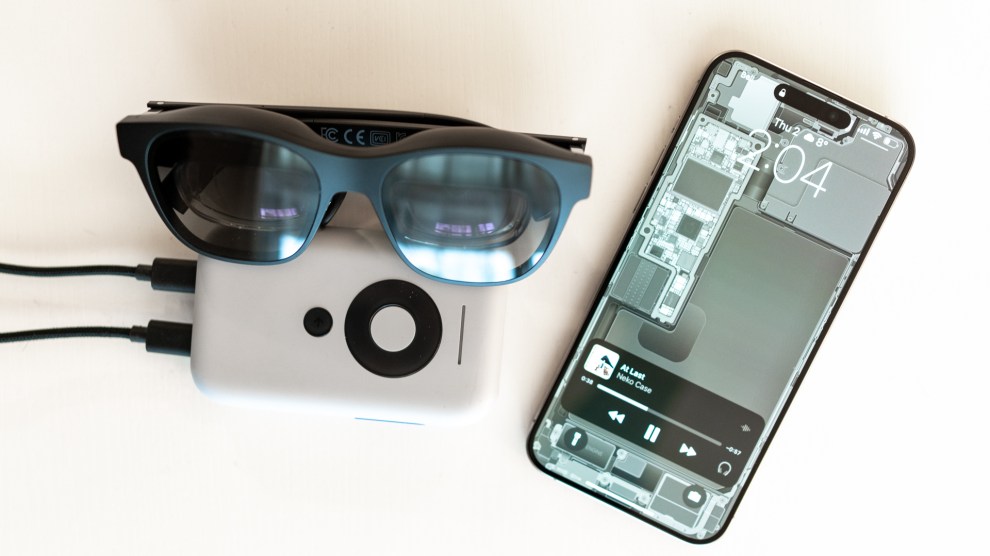The iPhone 15 was upgraded to USB-C, which was an excellent move for the sake of cable management sanity and also enabled native video. This allows you to do fun things like project Netflix videos onto your hotel TV and connect displays to the iPhone with ease using just one cable. It also opens up a growing accessory market that enhances the functionality and convenience of the device you carry with you the most, especially when traveling.
I refer to the plethora of so-called “augmented reality” glasses, which range in price from $300 to $500 and are better defined as spectacles with very tiny integrated projector displays. The most famous pair I’ve been using and enjoying pairing with my iPhone 15 Pro is the Xreal Air (the company has since released the Xreal Air 2 and the upgraded Xreal Air 2 Pro). These have a 0.68-inch, 120Hz MicrOLED display reflected off a mirror onto the lenses, allowing you to see the presentation and your surroundings. Attach the physical cowl to the front of the glasses to completely block out the light transmission for a more immersive viewing experience and genuine blacks.
Similar to many of the existing USB-C portable monitors on the market, the Xreal Air is powered by the devices that it is connected to rather than by their power source. Plugging them in should instantly reflect your screen on the Air’s display, and they operate flawlessly right out of the box with their associated USB-C to USB-C adapter and the iPhone 15 line. On your phone, the home screen and applications should have mirror images by default. However, if you use a video streaming app, you will see a full-screen, landscape-orientation video as soon as you begin streaming a program or movie.
In addition, it’s a great gaming peripheral (mainly when used with the Backbone USB-C controller for a much broader and more immersive picture). When used in a simple configuration with a linked Bluetooth keyboard, it’s also a decent web browser. Even when traveling, I occasionally used our WordPress backend to compose a few blogs. It also allows you to install your prescription lenses using a supplied insert; I paid around $50 shipping for some from HONSVR that included my prescription.
The Xreal Beam attachment is an optional add-on that enhances the Xreal Air experience by allowing you to fix your virtual display in space around your head position. This feature can help reduce the seasickness associated with your inner ears. In addition to serving as a backup battery bank when not in use for augmented reality duties, the Xreal Beam boasts its app ecosystem. However, it is currently in its early stages of development. Furthermore, you can utilize it to link a variety of gadgets, such as gaming consoles like the PS5 and Switch, to create a massive virtual display that can reach up to 300 inches in size.
To be clear, this is a sleight-of-hand version of what Apple is planning to offer with the Vision Pro, more of a gimmick than a revolutionary development. Although the Vision Pro will be available the following year for about a tenth of the price, it’s a better option for most people because it has many everyday features you’d want in a spatial computer that you can carry with you everywhere. It’s much lighter and more discreet in design.

